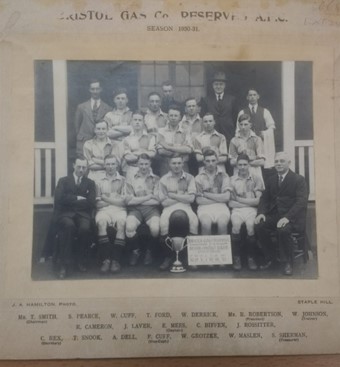We commissioned a report into the industrial and social histories of our new building at 65 Avon Street, known as The Sheds. In the heart of the new Temple Quarter Enterprise Campus it was the former headquarters of the Bristol Gas Company.
Here one of the report authors, Dr James Watts, Lecturer in Public and Creative Histories describes how the project has unfolded and how its shed light Bristol’s industrial heritage. Co-author on the report, Lena Ferriday, is continuing the research with a call for local people to come forward with their memories.
The Avon Street gasworks operated for nearly 150 years bringing light and heat to much of Bristol through the dangerous labour of those at the gasworks. Since April 2021 I have been researching this history for BDFI.
I was fortunate in beginning this project that research on the gasworks and their place in Bristol has been undertaken by others before me. Harold Nabb’s PhD thesis and pamphlet on the gasworks is invaluable as is Mike Richardson’s Men of Fire Work, Resistance and Organisation of Bristol Gasworkers in the Nineteenth Century alongside work by Michael Painting and Mike Richardson. Material on Know Your Place and in Bristol Archives has also been very helpful in digging into the history of the gas industry in Bristol in greater detail.

The research revealed many links and parallels between the historical use of the site as a gasworks with the revolutionary effect this had on the life of Bristol.
The gasworks and the many local people employed there also had a profound effect on the local community, the workforce was locally drawn and, along with employers like the Ironworks across Silverthorne Lane, created a sense of community in this deeply industrial area of Bristol.
Surprises
I was continually surprised by how far-reaching the technologies of gas heating and lighting were. Gaslighting created and extended the night-time economy, especially in the winter months. This meant that the centre of Bristol was lit from 1820 onwards. The Old Vic was an early customer of the gas company and remained one of their largest customers for many years and in 1869 was eligible for a special discount due to the volume that they were using which was more than 1 million cubic feet a year.
By the 1900s gas heating was also very common and pre-paid gas meters allowed tighter budgeting and enabled the spread of gas heating and cooking into working class households. There was a large showroom on Colston Street in the city centre, built in 1935, to advertise and sell gas cookers as well. This was demolished in 2007 and the building is now the Bristol Beacon.

The other thing that impressed itself on me was the sense of how much of a community the gasworks and the surrounding area seemed to be. The gasworks had football teams who were season champions in 1930-1 as well as a brass band. The solidarity of the workers in times of industrial action was remarkable as the gasworks were involved in the wave of strikes in Bristol in 1889.

Hopes for the research and site
I think the Avon Street gasworks could act as an important example for the modern use of historic buildings. It is, for me, about respect. Respecting the building itself, but also an awareness of the people who made, used, worked, and lived in them. I hope that the buildings’ new uses will reflect this history and help to educate others about the history of this industry and area. Those stories should not disappear but should be considered and reflected upon in the future uses of the buildings.
For instance, George Daniel Jones was a gas holder attendant during the 1940s. On March 11th 1941 ‘during an air raid two incendiary bombs lodged on the top of a large gas holder. Jones immediately climbed to the top of the holder and succeeded in knocking the bombs off the crown with his steel hat.’[1]
For his bravery that day he was awarded the George Medal. There is also now a road named after George Jones as well as a plaque on Folly Rd on the site of a gasholder close to Avon St and also owned by the Bristol Gas Company.
My main hope for this research and the site is to find more stories and personal memories from the current outreach. What I want to know about the site are these personal stories of someone’s Grandfather who was a stoker or captained the gasworks’ football team.
It is personal stories that give the site its interest given the long history of work there.
We’ve created a short survey for anyone who might have memories, artifacts, documents or photographs from the gas industry in Bristol. Please get in touch to help us ensure the social and industrial heritage of BDFI’s new home is remembered and celebrated.

